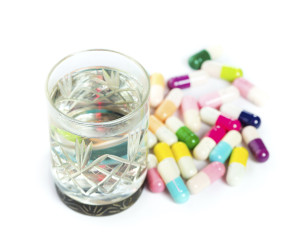Category: News Tags: , Peer Pressure
 Peer pressure is the common term for the forces that directly or indirectly encourage shared patterns of thought and behavior in people who belong to the same social circle. Researchers and addiction specialists know that this type of pressure has a significant impact on whether a given person gets involved in problematic substance use. In a study presented in 2014 to the American Sociological Association, researchers from Purdue University explored the impact that peer pressure has on the odds that young adults will partake in prescription drug abuse.
Peer pressure is the common term for the forces that directly or indirectly encourage shared patterns of thought and behavior in people who belong to the same social circle. Researchers and addiction specialists know that this type of pressure has a significant impact on whether a given person gets involved in problematic substance use. In a study presented in 2014 to the American Sociological Association, researchers from Purdue University explored the impact that peer pressure has on the odds that young adults will partake in prescription drug abuse.
Prescription Drug Abuse
Prescription drug abusers do such things as take more of a mind-altering medication than prescribed by their doctors, introduce their mind-altering medications into their bodies in unintended ways or consume a mind-altering medication not prescribed to them. According to recent figures compiled by the federal Substance Abuse and Mental Health Services Administration, prescription substances such as opioid painkillers, stimulants and sedative-hypnotics (i.e., tranquilizers) are abused by roughly 6.8 million U.S. teens and adults in the average month. This number surpasses the combined total for all abusers of heroin, cocaine, hallucinogens and inhalants by roughly 100 percent. Opioid painkillers are far and away the most likely targets for medication misuse.
Young adults are particularly likely to abuse a prescription medication, although such abuse also occurs in younger and older age groups. The peak rates of abuse appear among individuals between the ages of 18 and 25. People in this fairly narrow age range abuse prescription medications and other illicit substances more than twice as often as younger teenagers or older adults.
Peer Pressure
Peer pressure has both a positive and negative impact on the behaviors of children and adults. Positive aspects of this universal influence include the promotion of strong social bonds, mutual support in the development of new abilities and reinforcement for the attainment of meaningful personal and social achievements. Negative aspects of peer pressure include the promotion of antisocial conduct, encouragement to engage in law-breaking behavior and promotion of substance use and other highly risky activities. Some of the influence of peer pressure appears in the form of directly stated demands to act in certain ways or do certain things. Peer pressure also exerts a more indirect influence by encouraging the individual to act in ways that he or she perceives as pleasing to other members of a peer group, or to act in ways that increase the enjoyment of group experiences.
Influence on Prescription Abuse
In the study presented to the American Sociological Association, the Purdue University researchers used an examination of 618 young adults between the ages of 18 and 29 to explore the ways in which peer pressure increases the odds of engaging in prescription drug abuse. All of these individuals had a recent medication abuse history and self-reported their level of involvement in such abuse over a three-month span of time, as well as their peer-related motivations for this involvement. Four hundred four of the study participants submitted information via a survey; the remainder submitted information in person while out for the evening at a club, bar or some other nighttime social gathering spot. The researchers wanted to know how peer pressure influences the number of times a young adult abuses prescription medications, as well as the likelihood of introducing a prescription medication into the body in unsanctioned ways (e.g., injection or nasal inhalation) and the likelihood of developing prescription medication dependence.
After reviewing the survey and interview data, the researchers concluded that the study participants abused a prescription medication an average of 38 times in the three-month timespan under consideration. They also concluded that peer pressure has an impact on abuse frequency, the odds of introducing prescription drugs into the body in unsanctioned ways and the odds of developing the symptoms of physical dependence. However, generally speaking, the participants did not describe a direct peer influence on their actions; instead, they described an indirect peer influence that stemmed from their desire to socialize with their friends and have a “good time.” Peers also acted as indirect influences by acting as providers of prescription medications and abusing medications in the presence of other peer group members. The study’s authors note that prescription drug abuse tends to occur within peer groups that view such abuse as a socially beneficial activity and de-emphasize any negative social consequences of medication misuse.